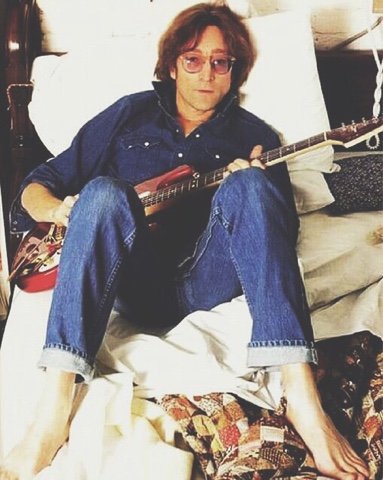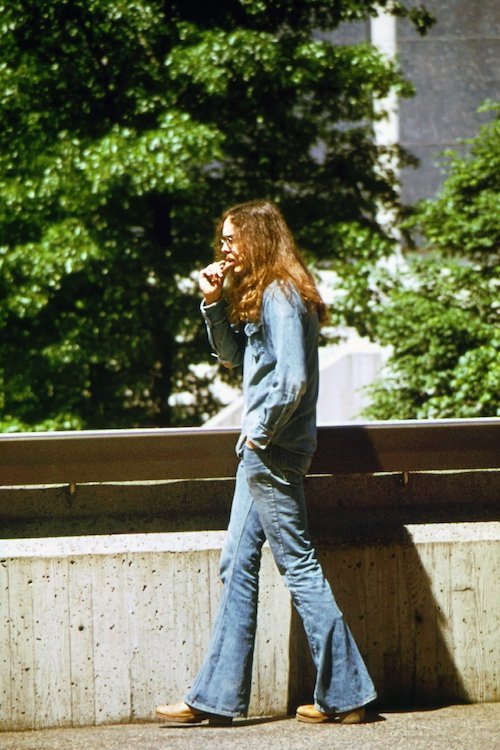A BRIEF HISTORY: Denim in the 1960s


The 1960s, a period distinguished by its seismic cultural shifts and dynamic fashion trends, bore witness to the transformation of denim from a mere utilitarian fabric into an emblem of rebellion, self-expression, and a fervent rejection of societal norms. In this blog post, we look look at denim fashion during the 1960s, delving into its multifaceted evolution and its profound resonance in both society and fashion.
As the winds of change swept through the 1960s, a counterculture movement emerged, underpinned by an unwavering aversion to the norms and standards that had long governed society. Denim, once a humble fabric confined to industrial contexts, underwent a metamorphosis. It transitioned from a utilitarian cloth into a powerful totem of defiance and self-identity. This fabric, which had once been associated with blue-collar labour, now symbolized the resilience and determination of a generation poised to redefine their place in the world. The tactile ruggedness of denim became an embodiment of the tenacity that characterized youth eager to shed the shackles of their predecessors. This transition wasn't just a change in clothing; it was a tangible manifestation of an era in flux, a way of encapsulating the very spirit of change through fabric.
The 1960s heralded a new era where celebrity influence extended beyond entertainment to shape broader lifestyle trends. Preeminent among these cultural architects were The Beatles, a phenomenon whose allure transcended music. Their endorsement of denim elevated it to unprecedented heights of significance. The Beatles' penchant for casual denim ensembles and their distinct "mop-top" hairstyles were more than mere stylistic choices; they became a rallying cry for cultural transformation. John Lennon, with his trademark denim jackets and bell-bottom jeans, emerged as an emblem of authenticity and resistance. The very fabric that had once adorned the bodies of laborers became interwoven with the fabric of cultural change, uniting the youth in a shared visual language of rebellion against the norm.

Amidst the kaleidoscope of denim styles that permeated the 1960s, none encapsulated the era's audacious spirit quite like the bell-bottom. Distinguished by a snug fit around the hips and thighs, these iconic jeans exuberantly flared from the knee downward. However, the emergence of bell-bottoms wasn't merely a sartorial fad; it was a clarion call of nonconformity. The pronounced flare wasn't just a stylistic choice; it was a physical embodiment of the era's audacity—an ostentatious visual rejection of the constricting silhouettes that had defined fashion for decades. Beyond their aesthetic appeal, bell-bottoms possessed a kinetic quality that perfectly mirrored the era's vibrant music festivals and communal gatherings. They swayed and twirled with every step, capturing the very essence of the 1960s' unrestrained sense of liberation.

Denim's pervasive influence during the 1960s stretched far beyond the boundaries of jeans, infiltrating a diverse array of garments that showcased its unparalleled adaptability. Denim jackets, characterized by their rugged allure, evolved into more than just functional outerwear; they transformed into dynamic canvases of self-expression. These jackets became a medium for personal narratives, adorned with an eclectic array of patches, slogans, and meticulously crafted artistic expressions. Each embellishment represented a stroke in the living artwork of its wearer's journey. In stark contrast, denim skirts introduced a touch of femininity, skillfully merging the fabric's inherent rebelliousness with a softer aesthetic. Denim's boundless versatility empowered individuals to weave their own fashion tales, their choices epitomizing the freedom that epitomized the era.
The 1960s marked an epochal moment in the trajectory of unisex fashion, with denim assuming a pivotal role in this transformation. Denim jeans, once demarcated by gender lines, now stood as a potent symbol of unity, transcending the traditional confines of male and female attire. Men and women alike enthusiastically embraced the comfort, functionality, and effortlessly cool aesthetics of denim, thus forging a shared style language that transcended conventional boundaries. This sartorial amalgamation mirrored the broader societal shift towards equality and inclusivity, laying the foundation for the androgynous fashion ethos that would come to define subsequent decades.
The indomitable spirit of 1960s denim fashion resonates resoundingly through the annals of modern style. Distressed denim, an homage to the era's audaciousness, endures as an eternal fixture of street fashion. The intricate patchwork and handcrafted detailing that characterized 1960s denim have found renewed vitality in the hands of modern DIY enthusiasts, resulting in one-of-a-kind pieces that convey unique narratives. The emphasis on self-expression and the dismantling of societal barriers, so integral to the 1960s ethos, continues to invigorate contemporary fashion enthusiasts. These individuals harness denim's unparalleled adaptability to communicate their authentic selves in a manner that's both evocative and empowering.
The denim fashion of the 1960s isn't a mere footnote in fashion history; it's a vivid testament to a cultural revolution in motion. Denim's journey from humble workwear to a symbol of rebellion encapsulates an era defined by audacity and transformation. As we continue to revere denim as an enduring textile, it's paramount to cherish its origins in the 1960s—a time when it wasn't merely cloth; it was a living tapestry of revolution. Denim's legacy serves as a poignant reminder that fashion transcends the realm of material; it's a narrative of metamorphosis, reflecting the evolution of identity and society woven into every fiber.

